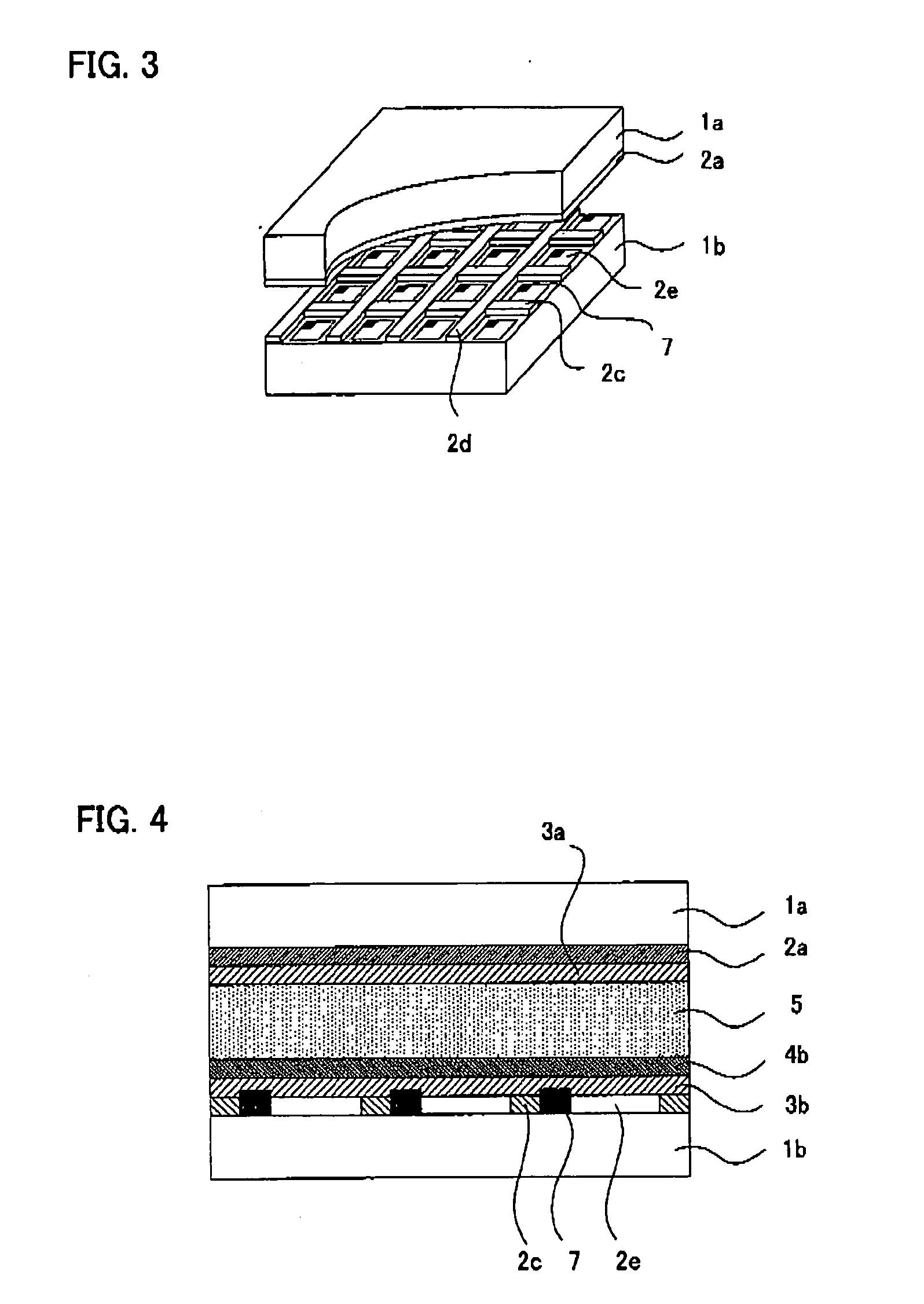Liquid crystal display
a liquid crystal display and color display technology, applied in the field of liquid crystal display, can solve the problems of insufficient processing of moving images, inability to achieve graduation display, complex process, etc., and achieve the effect of high-quality display, high response speed, and easy acquisition of liquid crystal display for color display
- Summary
- Abstract
- Description
- Claims
- Application Information
AI Technical Summary
Benefits of technology
Problems solved by technology
Method used
Image
Examples
example 1
[0316] As the reactive liquid crystal, the below-mentioned compound (A) was used
(Production of the First Alignment Substrate)
[0317] By coating with a die coater, an ink containing the plate-like molecule having the photo dichroism in the visible light range (produced by Optiva, Inc., N015) onto the ITO film of a glass substrate having an ITO electrode, washed well, and drying, it was soaked in a 15% barium chloride aqueous solution for about 1 second. By further washing and drying again, a first alignment substrate having a 0.3 μm thickness columnar alignment layer was obtained.
(Production of the Second Alignment Substrate)
[0318] A 0.3 μm thickness columnar alignment layer was formed on the ITO film of a glass substrate having an ITO electrode, washed well by the method mentioned above. Then, a solution produced by dissolving in a cyclopentanone the compound (A) to have the 2% by weight concentration was spin coated onto the columnar alignment layer by 4,000 rpm for 30 second...
example 2
(Formation of the Concave Part Pattern)
[0320] An ultraviolet ray curable acrylate resin of the below-mentioned composition was spin coated onto a glass substrate having an ITO electrode, washed well. With a concave part forming substrate having the ruggedness formed by the electron beam drawing method placed thereon, a 100 kg / cm2 load was applied for 1 minute. After directing an ultraviolet ray by 100 mJ / cm2 in this state and removing the concave part forming substrate, an ultraviolet ray was directed by 3,000 mJ / cm2 so as to form a concave part pattern in a stripe form having a 0.2 μm width, a 0.4 μm pitch and a 0.2 μm depth. By applying the plasma process thereto, the hydrophilic process was carried out on the surface.
(Composition of the ultraviolet ray curable acrylate resin)Gohselac UV-7500B (produced by Nippon40 parts by weightSynthetic Chemical Industry Co., Ltd.)1,6-hexane diol acrylate (produced35 parts by weightby NIPPON KAYAKU CO., LTD)Pentaerythritol acrylate (produce...
example 3
[0324] With the same conditions as in the example 1, a test cell was produced. A liquid crystal prepared by mixing 5% by mass of a polymerizable monomer (produced by DAINIPPON INK AND CHEMICALS, Inc. UCL-001) to a ferroelectric liquid crystal (produced by AZ Electronic Materials, R2301) was injected into the test cell by the about 100° C. temperature condition and cooled down the same gradually. Thereafter, by the exposure with a non polarized ultraviolet ray by about 1,000 mJ / cm2, the polymerizable monomer was polymerized. In the liquid crystal display obtained accordingly, a mono domain even alignment was obtained.
PUM
| Property | Measurement | Unit |
|---|---|---|
| width | aaaaa | aaaaa |
| width | aaaaa | aaaaa |
| thickness | aaaaa | aaaaa |
Abstract
Description
Claims
Application Information
 Login to View More
Login to View More - R&D
- Intellectual Property
- Life Sciences
- Materials
- Tech Scout
- Unparalleled Data Quality
- Higher Quality Content
- 60% Fewer Hallucinations
Browse by: Latest US Patents, China's latest patents, Technical Efficacy Thesaurus, Application Domain, Technology Topic, Popular Technical Reports.
© 2025 PatSnap. All rights reserved.Legal|Privacy policy|Modern Slavery Act Transparency Statement|Sitemap|About US| Contact US: help@patsnap.com



